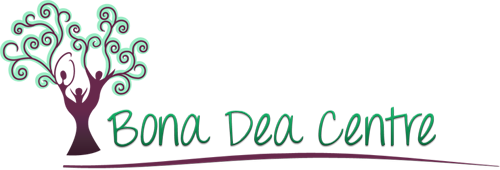Neurofeedback
What is Neurofeedback?
Neurofeedback, also known as neurotherapy or EEG biofeedback, is a non-invasive, medication-free, and effective method of treatment in which a client learns to change brainwave patterns through a process of auditory and visual feedback. Cutting-edge computer technology is used to give real-time information to assist a client to alter the power of speeds (frequencies) of brainwaves, improve connectivity (called coherence) between brain areas, change the ratios of power between brainwaves, and improve the phase and symmetry between brain regions.
The process is tailored to the needs of each client and power training, live z-score training and infraslow fluctuation training (ISF) can be utilised to achieve optimal outcomes.
This intervention can help to improve:
- Sleep regulation
- Concentration and academic performance
- Anxiety
- Depression
- Overall functioning
- Stress
- Difficulties with learning
- TBI
- Obsessive and compulsive behaviour
At Bona Dea Centre, we see children and adults from 4 years old into adulthood.
Here is a video explaining Neurofeedback, courtesy of www.isnr.org.
What happens in a Neurofeedback session?
Electrodes are attached to the scalp with paste to record brain activity produced in those areas of the brain that are monitored. The number of electrodes placed is tailored to the needs of each client. The information is then converted into game-like displays. With guidance from the therapist, the game is controlled by the client by changing the dynamic interaction between brainwave frequencies.
The game is not played with controls such as a keyboard or mouse, but rather progresses as a result of improved brain activity throughout the session. Visual and auditory feedback is used to reinforce this positive self-regulation and, after a period of time, the brain retains these new patterns and self-regulates outside of the neurofeedback session. These changes take place as a result of operant conditioning. Following the desired changes in brain activity, positive improvement is usually seen in emotional, physiological and cognitive functioning.
The placement, and number, of electrodes might change during the neurofeedback process depending on the brain regions that need to be trained. Power training, live z-score training and ISF training can be used.
Each session is just over 30 minutes long and at least two sessions per week are strongly recommended.
In order to accurately devise a personalised treatment plan, a QEEG and Standard EEG are usually done prior to beginning the process.
What types of Neurofeedback are available?
At Bona Dea Centre, we offer power training, live z-score training and infraslow fluctuation training (ISF).
- Power training is effective at changing the amplitude (power) of the frequencies of brainwaves that have been identified by the QEEG as being too high or too low in power.
- Live z-score training, using as few as 2 electrodes or as many as 19 at one time, is effective in training many areas of the brain simultaneously to achieve values within an acceptable norm. Real-time values of amplitude, coherence (efficient connectivity between different areas), ratios between frequencies, phase, and asymmetry can be trained simultaneously. Live z-score training trains neural networks to increase stability and functional efficiency.
- Infraslow fluctuation neurofeedback training focuses on the lowest frequencies that the brain produces – in the region of 0.003hz. This type of training aims to better regulate autonomic nervous system function and to be able to attend to the demands of the environment. Optimal balance between the sympathetic and parasympathetic nervous systems is of the utmost importance in normal day-to-day functioning. Too much sympathetic activation will result in anxiety, hypervigilance, increased stress response, distractibility and overly emotional behaviour whereas too much parasympathetic activation will result in daydreaming, fatigue, poor concentration and slow processing. Sleep quality is negatively affected by a dysregulated autonomic nervous system. These very slow frequencies link together body processes (such as digestion, heart function and blood flow) and emotional regulation. Training at these frequencies results in optimised functioning across all aspects of daily activity.
How long is a Neurofeedback process?
This depends on the presenting symptoms but is typically in the region of 40 – 60 sessions.
What are the side effects of Neurofeedback?
There are no identified long-term negative effects of Neurofeedback. Some clients experience fatigue or mild headaches after the initial sessions, or when the type of training is changed. This is usually short-lived.
Where can I access research on Neurofeedback?
A comprehensive bibliography can be accessed through ISNR.
D. Corydon Hammond (2011) What is Neurofeedback: An Update, Journal of Neurotherapy: Investigations in Neuromodulation, Neurofeedback and Applied Neuroscience, 15:4, 305-336, DOI: 10.1080/10874208.2011.623090.
What is the difference between Biofeedback and Neurofeedback?
Biofeedback is a process that is used to monitor and train physiological functions occurring in the body, such as heart rate, skin temperature, sweat response, respiration and blood pressure, with the objective of improving health, emotional regulation and cognitive functioning.
Neurofeedback is a form of Biofeedback that is only used to train the central nervous system and the brain.
At Bona Dea Centre, Biofeedback (especially Heart Rate Variability) and Neurofeedback are often combined in a session.
Neurofeedback home training
We offer the management of the Myndlift neurofeedback home training program. You will need to purchase your own Muse headband, electrode and consumables. For more information on this option, please contact Justine Loewenthal.
For more information about Neurofeedback, visit www.isnr.org or www.biofeedbacksa.co.za.
To contact Justine Loewenthal directly, click here.
 |
 |
 |
 |

 011 514 0738 / 064 538 2540
011 514 0738 / 064 538 2540